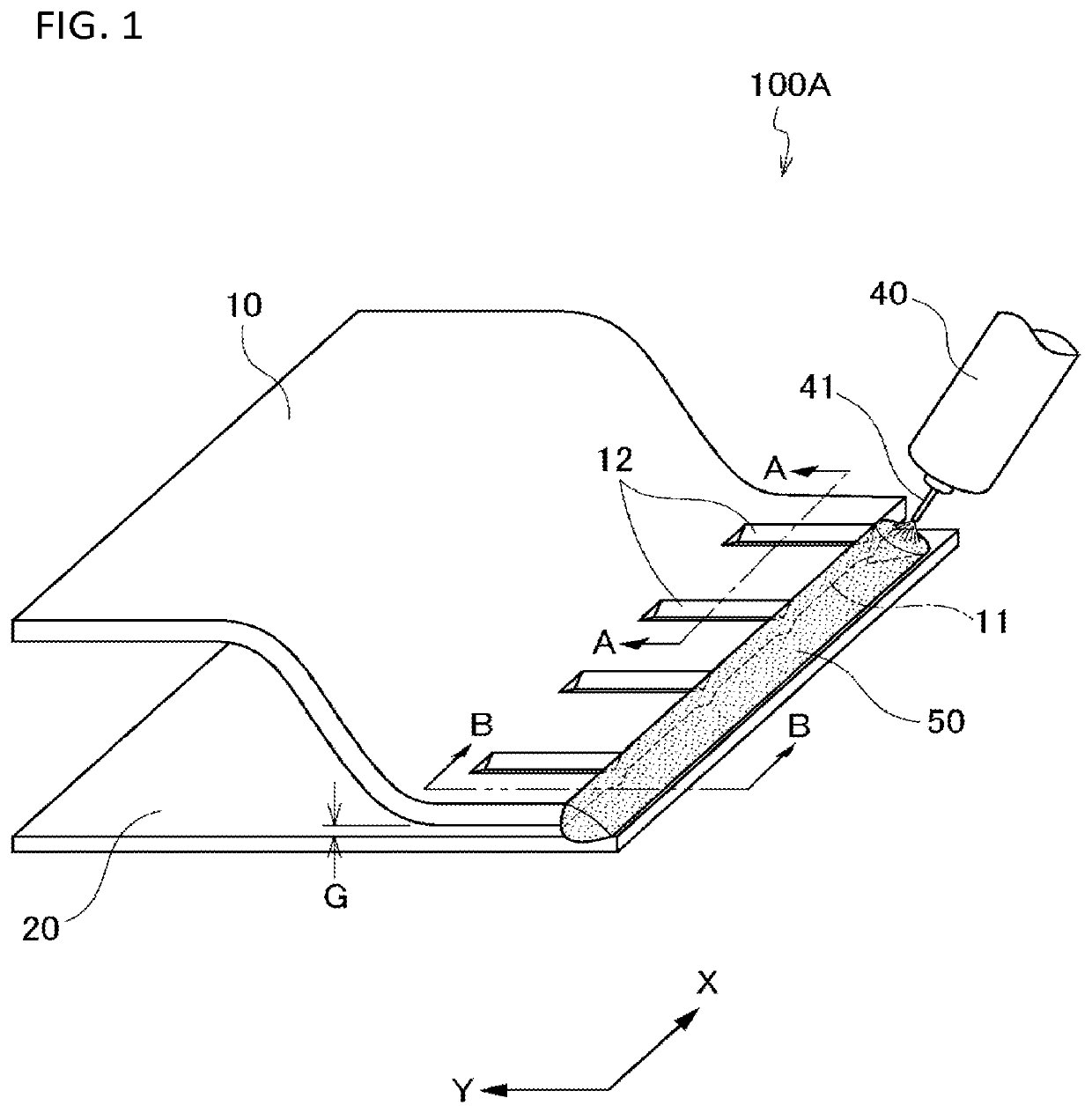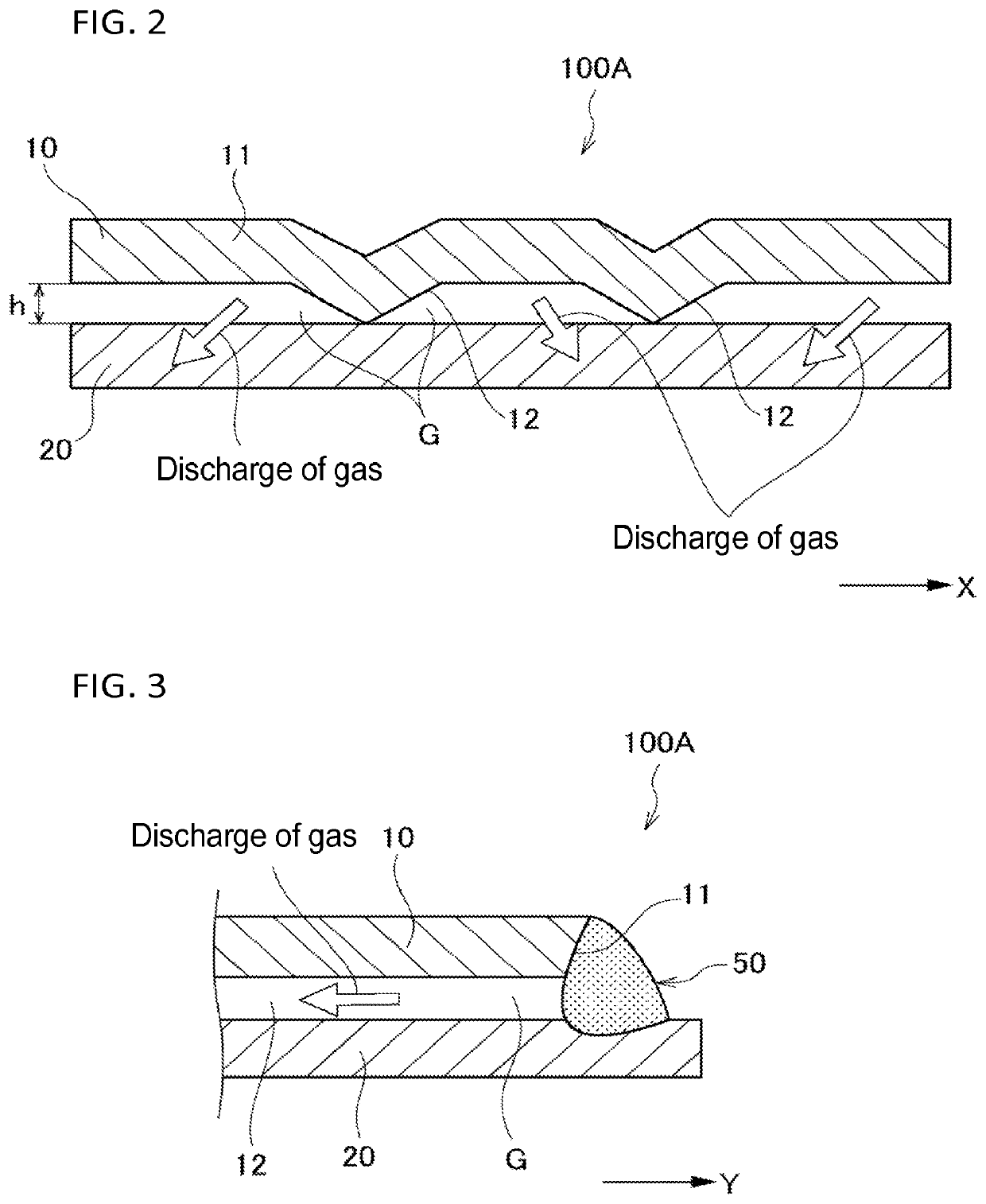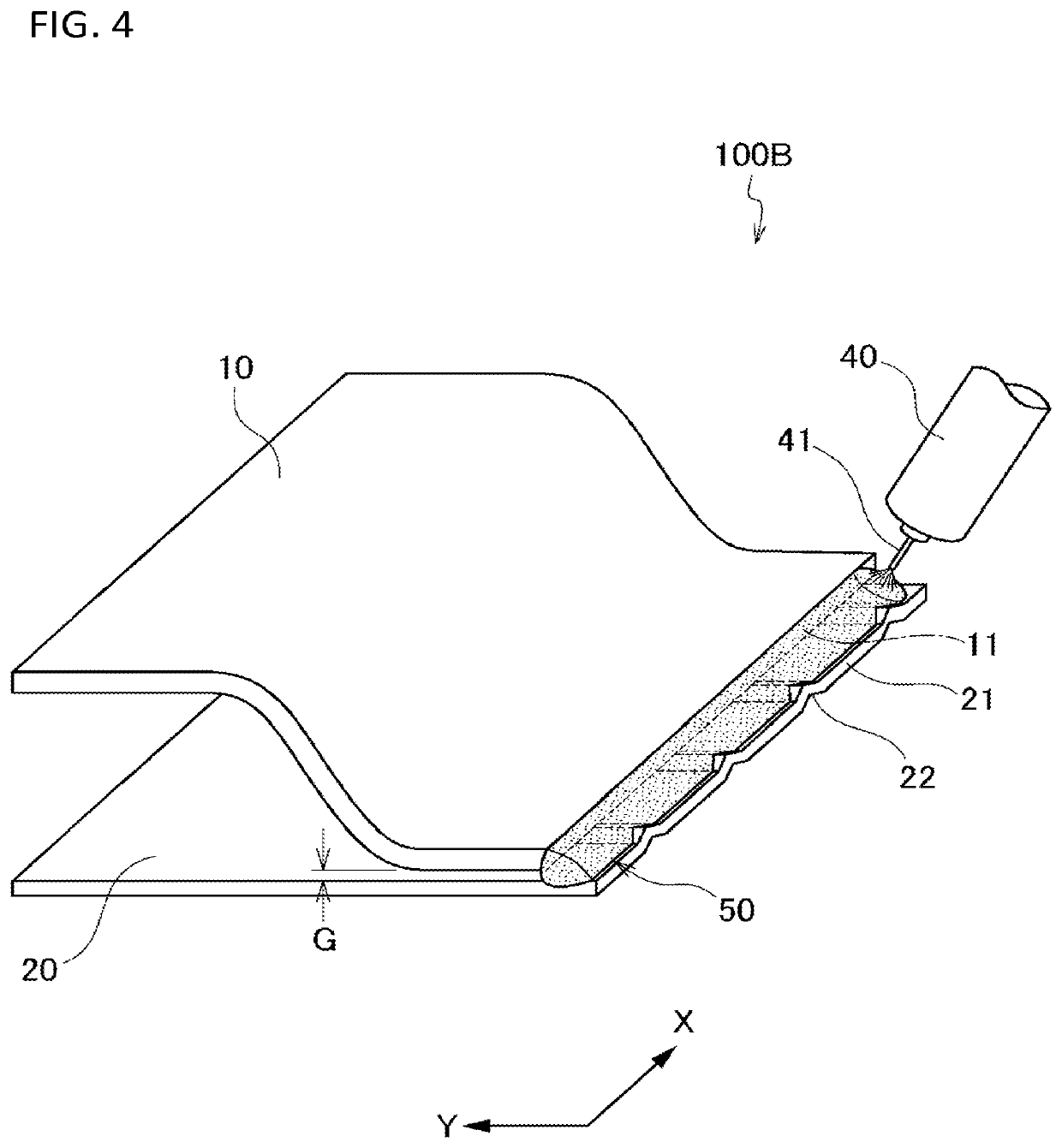Method for joining plated steel plates, and joined structure
a technology of plated steel and joint structure, which is applied in the direction of welding/cutting media/materials, manufacturing tools, welding apparatus, etc., can solve the problems of reducing the strength of welds in ultra-high-tensile steels, pore defects, and blowholes, so as to avoid deterioration of welding quality and variation in product dimensions, good joint structure
- Summary
- Abstract
- Description
- Claims
- Application Information
AI Technical Summary
Benefits of technology
Problems solved by technology
Method used
Image
Examples
first embodiment
[0042]FIG. 1 is a perspective view schematically illustrating a method for joining a plated steel sheet in the first embodiment of the present invention. FIG. 2 is an A-A sectional view of FIG. 1, and FIG. 3 is a B-B sectional view of FIG. 1.
[0043]As illustrated in FIG. 1 to FIG. 3, a joint structure 100A is formed by arc welding (e.g. MAG welding) a first steel sheet 10 and a second steel sheet 20, which are overlapped with each other, linearly along an edge portion (i.e. side edge portion) 11 of the first steel sheet 10 by a welding torch 40. At least one of the first steel sheet 10 and the second steel sheet 20 is a galvanized steel sheet obtained by galvanizing. Examples of the galvanized steel sheet include a hot-dip galvannealed steel sheet (GA), a hot-dip galvanized steel sheet (GI), an electrogalvanized sheet steel (EG), and the like. The tensile strength (TS) of a galvanized steel sheet is not particularly limited, and for example, the galvanized steel sheet is a high tensi...
second embodiment
[0066]FIG. 4 is a perspective view schematically illustrating a method for joining a plated steel sheet in the second embodiment of the present invention.
[0067]In the joint structure 100B in this embodiment, a plurality of protrusions 22 that extends in a direction (Y-direction) substantially perpendicular to an edge portion 21 of the second steel sheet 20 and is positioned along the edge portion 21 (X-direction) is formed in the second steel sheet 20 overlapped with the first steel sheet 10. The protrusions 22 are formed in a substantially inverted V-shape that protrudes in a direction toward the overlapping surface of the first steel sheet 10 (upward in FIG. 4). The protrusions 12 are formed by press working the second steel sheet 20.
[0068]The joint structure 100B is formed by overlapping the first steel sheet 10 and the second steel sheet 20 in a state where the protrusions 22 of the second steel sheet 20 are in contact with the first steel sheet 10, and performing arc welding li...
third embodiment
[0072]FIG. 5 is a perspective view schematically illustrating a method for joining a plated steel sheet in the third embodiment of the present invention.
[0073]In the joint structure 100C in this embodiment, the first steel sheet 10 and the second steel sheet 20 are each formed in a substantially U-shape in cross section. The inner width W1 of the opening of the first steel sheet 10 is slightly larger than the outer width W2 of the opening of the second steel sheet 20, and the first steel sheet 10 and the second steel sheet 20 are assembled such that the respective openings face each other. Then, the first steel sheet 10 and the second steel sheet 20 are joined by performing arc welding along the edge portion 11 of the first steel sheet 10 to form a linear weld metal (weld bead) 50 in a weld.
[0074]A plurality of protrusions 12 that extends in a direction (Y direction) substantially perpendicular to the edge portion 11 of the first steel sheet 10 and is positioned along the edge porti...
PUM
| Property | Measurement | Unit |
|---|---|---|
| Height | aaaaa | aaaaa |
| Height | aaaaa | aaaaa |
| Tensile strength | aaaaa | aaaaa |
Abstract
Description
Claims
Application Information
 Login to View More
Login to View More - R&D
- Intellectual Property
- Life Sciences
- Materials
- Tech Scout
- Unparalleled Data Quality
- Higher Quality Content
- 60% Fewer Hallucinations
Browse by: Latest US Patents, China's latest patents, Technical Efficacy Thesaurus, Application Domain, Technology Topic, Popular Technical Reports.
© 2025 PatSnap. All rights reserved.Legal|Privacy policy|Modern Slavery Act Transparency Statement|Sitemap|About US| Contact US: help@patsnap.com



